Focke-Wulf Fw 200 in 13 questions

Matthew Willis has written an excellent book on the most beautiful German aircraft ever flown, the Focke-Wulf Fw 200. We met him at an undisclosed location and plied him with Jägerbombs until he revealed the juiciest secrets of this classic design.
What was the Fw 200 and why was it significant to aviation and world history?
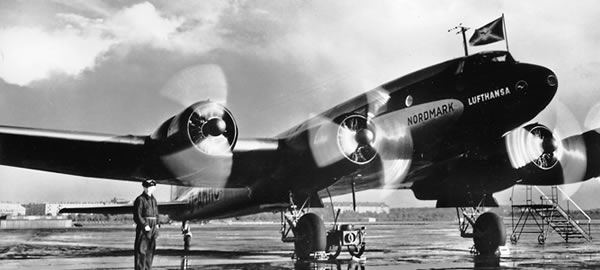
The Fw 200 was a late-1930s airliner that early in WW2 was hurriedly converted to a maritime patrol bomber. It was initially significant for being ridiculously modern at a time when aircraft like the Ju 52 were commonplace, and setting some much-publicised distance records. The war curtailed what would probably have been an illustrious civil career. Germany lacked a good long-range maritime patrol bomber at the outset of war and the Fw 200 was the only suitable type available. The straightforward military conversion was astonishingly successful in 1940-41 in attacks on Allied supply convoys, both in sinking ships in its own right and directing U-boats. For a single type with only a small number of airframes, it required an enormous effort by Allied forces to counter. It’s probably also worth mentioning that it was a popular VIP transport for high-ranking Nazis, and Hitler had his own personal version with a special escape system.
Why is it so much better looking than the Ju 52?
It’s tempting to say that this was purely a function of being a later generation of aeroplane, benefitting from better structural and aerodynamic knowledge, and better materials, not to mention wind-tunnel testing, which was still fairly rare at the time. But even for the late 1930s, it was among the best proportioned and most pleasingly lined airliners. Perhaps just luck, or perhaps the designers had an eye for art as well as function.
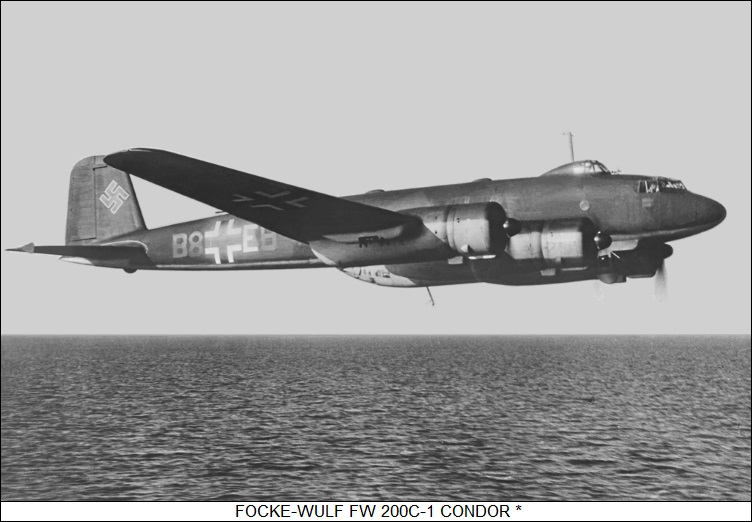
Not many were built were they?
Fewer than 300, in all variants.
What was its relationship with U-boats?
It was meant to be the U-boats’ ‘eye in the sky,’ reconnoitring for merchant ships and directing the submarines to their targets. And it did do this, and very effectively, but due to the power struggle between the Luftwaffe and Kriegsmarine, there was often too much focus on the Fw 200s attacking shipping directly, which was pleasing for Goering, but actually less effective overall than concentrating on reconnaissance.
Was it effective in World War 2?
Yes, in terms of sinking supply shipping, directing U-boats, and soaking up a huge expenditure of resources by the Allies to respond to it. It was also successful as a transport aircraft, making Rommel’s spring 1942 advance possible through petrol deliveries across the Mediterranean, and airlifting critical supplies to Axis troops in the Kuban pocket in 1944.
Was a long-range bomber version proposed?
It did actually act as a long range bomber early in the war, with some raids on a hydro-electric plant in Scotland, but it wasn’t particularly successful. The airframe wasn’t really suitable for development as a pure bomber as it had a very low strength factor. Focke-Wulf did start to develop a bigger aircraft with more powerful engines, the Fw 300, but even this was for essentially the same roles as the Fw 200.
Weirdest thing about the Fw 200 story?
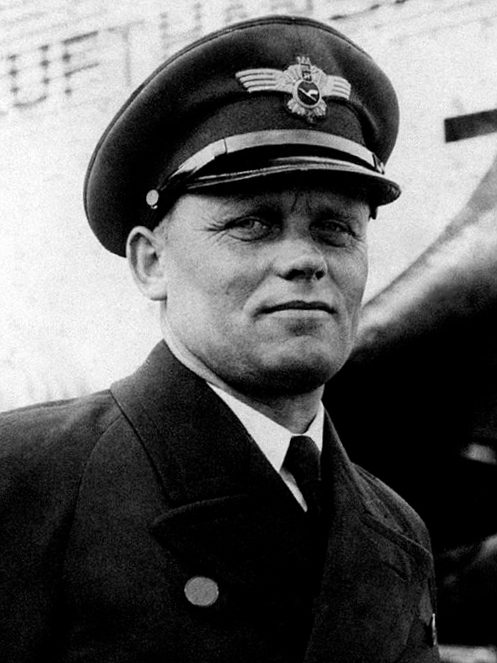
British intelligence was contacted in 1941 by a man claiming to be the father in law of Hitler’s personal pilot, Hans Baur, who it was claimed wanted to use Hitler’s personal Fw 200 to kidnap the Fuehrer and deliver him to the Allies. The RAF made plans to receive the aircraft at Manston on the appointed date, but needless to say, Hitler never arrived. The alleged kidnapping was probably part of a convoluted plot to damage Baur’s influence with King Boris of Bulgaria.
Best and worst things about the 200?
Best – superb efficient design that gave it great range and made it the only available aircraft capable of carrying out a number of important roles.
Worst – its airframe was too lightly built for military use so it had to be manoeuvred with care.
Could it fly safely on two engines?
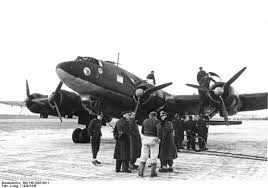
According to Focke-Wulf publicity when the aircraft was new, it could, though this capability was probably reduced somewhat by the significantly increased weight of military variants.
Wait – there was a BOAC 200?! What was the story?
One of the pre-war customers for the first airliner Fw 200s was the Danish airline DDL. One of its Fw 200s happened to be on a flight to the UK during the surprise invasion and occupation of Denmark in April 1940, and the aircraft was impounded and transferred to BOAC. It was stored for a while then refurbished by Cunliffe Owen from Spring 1941, but in July that year crashed on take-off and was written off. No Condor in ‘speedbird’ markings, sadly.
What was it comparable with?
As an airliner, it doesn’t seem to have an exact analogue – the French Bloch MB.160 is probably closest but I doubt many people even know what that is. I’d say it fits somewhere between the DH91 Albatross and the DC-4. As a maritime raider it isn’t like much else either – it had the same sort of role as the RAF’s Sunderland flying boats, and later on things like the Consolidated Liberator in Coastal Command service. All-in-all it was pretty unique.
What should I have asked you?
Where did the expression ‘Scourge of the Atlantic’ come from?
It is attributed to Churchill – a lot. The trouble is, despite a great deal of searching, I have not been able to find an actual source for it, just literally hundreds of ‘”the scourge of the Atlantic,” as Churchill called it’-type quotes. The closest I can get is this, from Churchill’s The Second World War: “To the U-boat scourge was added air attack far out on the ocean by long-range aircraft. Of these, the Focke-Wulf 200, known as the Condor, was most formidable though happily at the beginning there were few of them.” I suspect that the usual version is a misquote of the above, but it’s hard to confirm because the popular version is so very prevalent.
Where should people buy your book from?
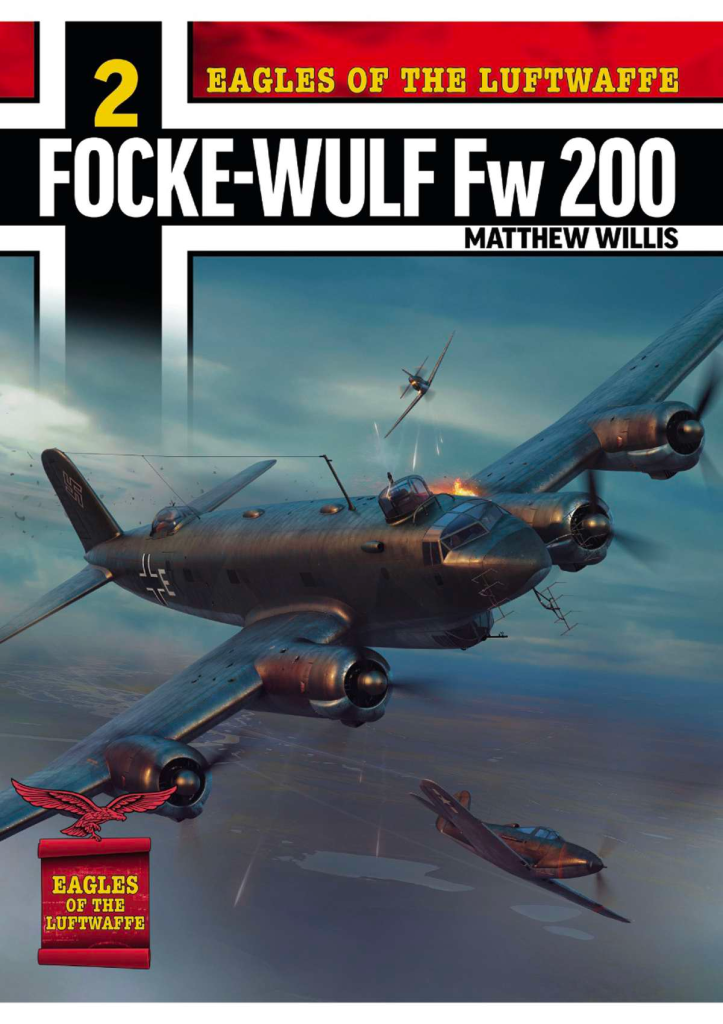
It’s available from the publisher, Morton’s as well as Amazon. You might also find it at WHSmith, and it can be ordered from any regular bookshop.
“Willis’s Fw 200 book is meticulously researched, utterly readable and with extremely beautiful photography – an essential book for every aviation historian.” – Joe Coles, Hush-Kit Aviation Blog


Theres bits of one remaining from a crash in Southern Ireland, its all easily accessible. Interesting story too. https://aviation-safety.net/wikibase/192606
One thing that has always puzzled me – why did the Fw 200 have such a complicated main landing gear strut? It is some sort of truss design. And why was it hinged rather far aft so that the strut wasn’t more vertical to the ground?
Its a tail dragger so on taxiing at max weight the strut is angled that way to match the plane angle
It should be noted Eric ” Winkle” Brown shot a few of them down, He realised they where vulnerable from directly in front so he just charged them head on and shot up the cockpit.